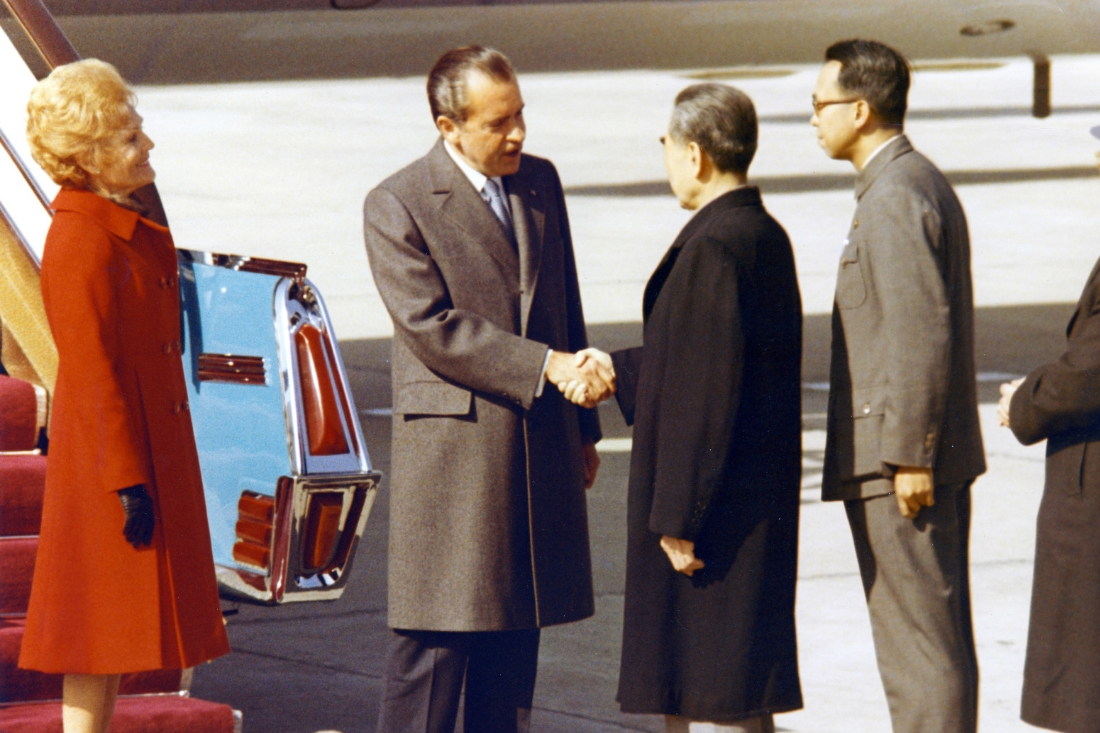
Nixon goes to China: A smart journey looks even smarter
By David Ignatius
February 17, 2012
So as an unlikely pre-Presidents’ Day bouquet, here are some more kind words about Nixon — or at least his role in plotting the world-changing China trip. The thrust of these comments is that Nixon began planning his breakthrough years before he pulled it off and was relentless in driving it through to completion.
I offer this clarification because, given the national Nixonophobia, credit for the China opening usually goes to Henry Kissinger, his national security adviser. Kissinger handled his part of the opening superbly, but, as he told me last week, it couldn’t have happened without Nixon.
Take these as amendments to what I wrote on Feb. 12. If you want further reading, the story is told in “White House Years,” the first volume of Kissinger’s memoirs:
— Nixon began laying the groundwork more than a year before his election, in an October 1967 article in Foreign Affairs titled “Asia After Viet Nam.” He wrote: “Taking the long view, we simply cannot afford to leave China forever outside the family of nations.” He argued that this meant “pulling China back into the world community — but as a great and progressing nation, not as the epicenter of world revolution.”
— As president, Nixon covered his tracks. At his first White House news conference on Jan. 27, 1969, he was asked about improving relations with Beijing but demurred: “I see no immediate prospect of any change in our policy.” The real message was conveyed in a Feb. 1 memo to Kissinger: “I think we should give every possible encouragement to the attitude that the White House is ‘exploring possibilities of a rapprochement with the Chinese.’ This, of course, should be done privately, and should under no circumstances get into the public prints from this direction.”
— Nixon tried to signal the Chinese through various channels, including a conversation with French President Charles DeGaulle. But the sneakiest, and almost most comedic, attempt was through the U.S. Embassy in Warsaw, which since the Korean War had been the place where the United States and China passed messages.
Kissinger urged the U.S. ambassador, Walter Stoessel, to tell the Chinese ambassador at the next cocktail party that the United States wanted to talk. Stoessel apparently assumed this was just a Kissingerian fantasy and did nothing for several months. But after a nudge from the president, he pulled aside the Chinese charge d’affairs at a Yugoslav-sponsored fashion show in early December. The Chinese was so skittish that he fled, but Kissinger had the State Department spokesman announce the contact the next day. The Chinese got the message and invited Stoessel to their embassy a week later. The game was on.
— The Beijing train was slowed by the U.S. invasion of Cambodia in 1970, but it got rolling again soon enough — partly because the Chinese were so eager for it. For example, I mistakenly credited Nixon for encouraging the U.S. ping-pong team’s visit to China in early 1971, a public symbol of the thaw. In fact, the invitation was pushed by the Chinese, who apparently wanted to put some public pressure on Nixon to hurry up.
“It really was Nixon who conceived this and brought it along,” recalls Richard Solomon, who worked on China for Nixon’s National Security Council staff and is now president of the U.S. Institute for Peace. It still feels awkward for those who grew up in the shadow of Watergate to praise Nixon, but in this case, he amply deserves it.
Read the article at The Washington Post.

